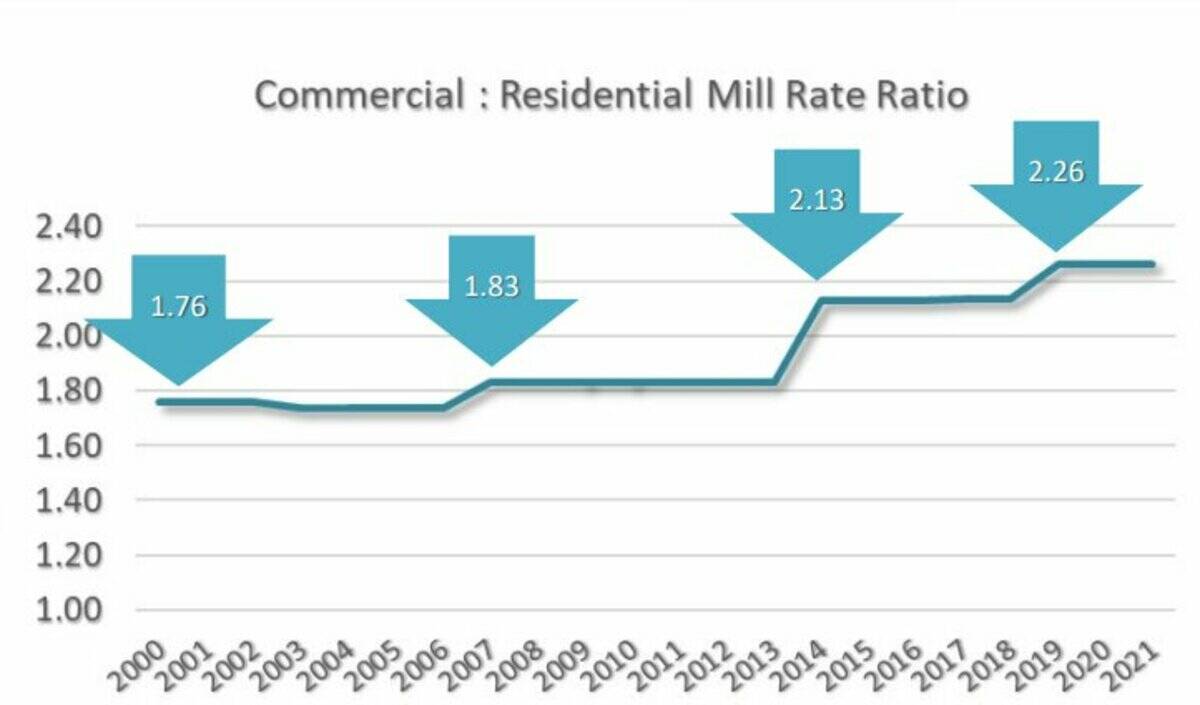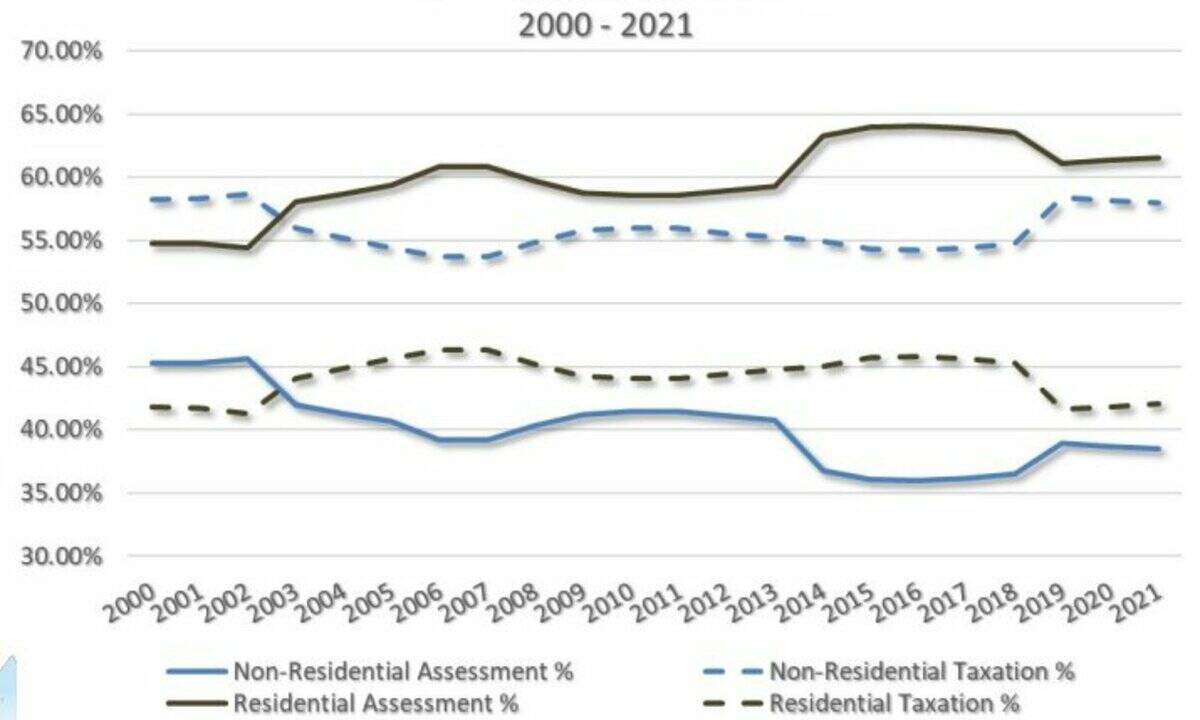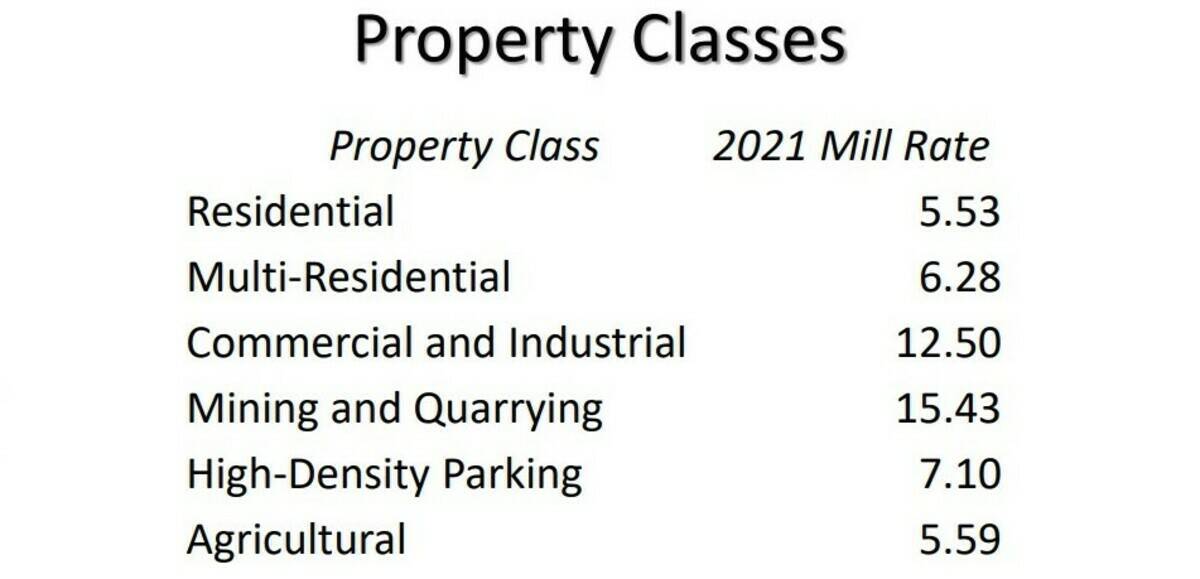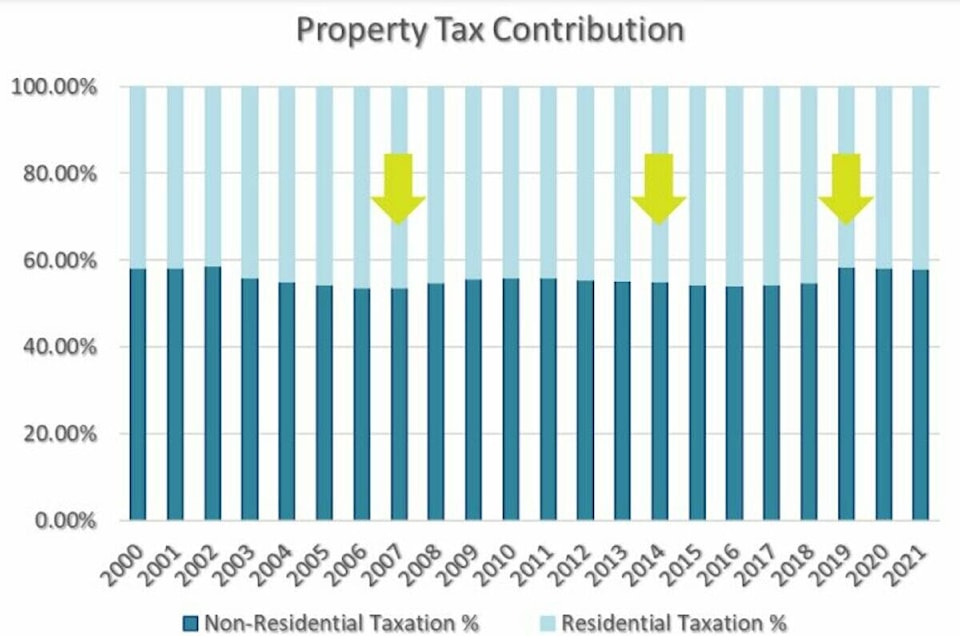The Yellowknife Chamber of Commerce is asking the City of Yellowknife to hold off on property tax increases for business owners.
“Our members remain concerned because more of our community’s tax burden has been gradually, but continuously, placed on Yellowknife businesses,” reads a notice from the Yellowknife Chamber of Commerce.
Property taxes are determined through the mill rate ratio, which divides levies between residential and commercial property owners. The ratio has changed every five to seven years for general property assessment.

“Over the past (two decades), we’ve seen the rate increases continually to go up,” Robert Warburton, Yellowknife Chamber of Commerce president, said during his presentation at the city’s Governance and Priorities Meeting on Monday.
Though the next general assessment for the city won’t occur until some point in 2023, the chamber recognized this in its notice by stating that it would like to see the city make a commitment in December regarding mill rate ratios.
“We urge council to make changes now, whether through a motion of council or a formal budget policy to maintaining mill rate ratios fixed at the previous year’s levels,” reads the chamber’s notice.
“We just want it to be fair,” said Warburton.

Sharolynn Woodward, the municipality’s director of corporate services, cautioned against the recommended December timeframe, however, saying there’s “still a lot that’s unknown about our final assessed value.”
“Even though we’re trying to keep up with everything all throughout the year, once we clear the board of revision, and perhaps the next level, there can be some underlying changes in our assessment base that could maybe counterbalance or negate or somehow change any discussions that were held in December,” Woodward explained.
Councillors Niels Konge and Shauna Morgan voiced varying degrees of support regarding the chamber’s suggestion.
“I think you’ve nailed it,” said Konge. “I think that’s really what we need to sort out. This is something that I had questions about, how we’re dealing with this — I think for the past five years, maybe even more.”
Morgan was more cautiously optimistic.
“What I would like to focus on is how do we separate the commercial industrial, like those businesses for whom the shifts would just be a rounding error,” she said. “Not shifting that rounding error onto residents, for whom it could be a huge shock and make a huge difference.”

The commercial-residential mill rate ratio has held at 1:2.26 since 2019, following input from the 2018 general assessment.
Further recommendations included the chamber asking the city to develop a policy regarding the mill rate ratio and the “philosophical approach to property tax distribution council would like to adopt.”
The policy would assist council in setting intentions and strategies behind ratios and distribution.
